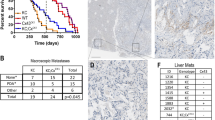Abstract
Gap junction intercellular communication (GJIC) or cell coupling has an important function in maintaining tissue homeostasis and is thus a critical factor in the life and death balance of cells. While the role of GJIC in cell growth regulation has been much studied, its involvement in apoptosis remains unclear. In this study we elucidated the possibility that cell death is propagated via gap junctions, employing the rat bladder carcinoma cell line BC31. BC31 cells proliferate quickly, are tumorigenic, and are well-coupled via gap junctions that contain the gap junction protein Connexin43 (Cx43). In addition, these cells are predisposed to spontaneous death by apoptosis, particularly upon achieving confluency. We found that many dying BC31 cells express Cx43 just as their non-apoptotic counterparts do. Furthermore, Cx43 in apoptotic cells could be functionally competent, supporting coupling of these cells with their non-apoptotic neighbors, and as a result, clusters of coordinately dying cells were observed. The role of Cx43 and GJIC in propagating cell death was shown by analysing clones of BC31 cells expressing a mutant of Cx43 that is a dominant negative inhibitor of GJIC, and by using β-glycyrrhetinic acid to inhibit intrinsic cell coupling in BC31 cells: in both cases the formation of clusters of dying cells was abrogated, and the intensity of cell death was considerably decreased. These results suggest that GJIC spreads cell-killing signals initially generated by a single cell that spontaneously initiates apoptosis, into healthy surrounding cells, thus increasing the level of cell death. Treatment of BC31 cells with the sleep-inducing lipid Oleamide, which selectively restricts gap junction permeability to Ca2+ ions, did not abrogate coordinated cell death by clusters, indicating that Ca2+ ions are the most probable cell-killing signals spread through gap junctions.
This is a preview of subscription content, access via your institution
Access options
Subscribe to this journal
Receive 50 print issues and online access
$259.00 per year
only $5.18 per issue
Buy this article
- Purchase on Springer Link
- Instant access to full article PDF
Prices may be subject to local taxes which are calculated during checkout









Similar content being viewed by others
Change history
25 June 2002
A Correction to this paper has been published: https://doi.org/10.1038/sj.onc.1205567
References
Asamoto M, Takahashi S, Imaida K, Shirai T, Fukushima S . 1994 Carcinogenesis 15: 2163–2166
Blanc EM, Bruce-Keller J, Mattson MP . 1998 J. Neurochem. 70: 958–970
Badd SL, Lipton SA . 1998 Nat. Neurosci. 1: 431–432
Chipman JK . 1995 Hum. Exp. Toxicol. 14: 539–540
Cortina ML, Kang J, Lin JH-C, Bueno E, Hansen TW, He L, Liu Y, Nedergaard M . 1998 J. Neurosci. 18: 2520–2537
Davidson JS, Baumgarten IM, Harley EH . 1986 Biochem. Biophys. Res. Commun. 143: 29–36
Duflot-Dancer A, Mesnil M, Yamasaki H . 1997 Oncogene 15: 2151–2158
Estin D, Li M, Spray D, Wu JK . 1999 Neurosurgery 44: 361–368
Fitzgerald DJ, Knowles SE, Ballard FJ, Murray AW . 1983 Cancer Res. 43: 3614–3618
Guan X, Cravatt BF, Ehring GR, Hall JE, Boger DL, Lerner RA,, Gilula NB . 1997 J. Cell Biol. 139: 1785–1792
Guan X, Wilson S, Schelender KK, Ruch RJ . 1996 Mol. Carcinogen. 16: 157–164
John SA, Kondo R, Wang SY, Goldhaber JI, Weiss JN . 1999 J. Biol. Chem. 274: 236–240
Jorgensen NR, Geist ST, Civitelli R, Steinberg TH . 1997 J. Cell Biol. 139: 497–506
Krutovskikh V, Yamasaki H . 1997 Histol. Histopathol. 12: 761–768
Krutovskikh V, Yamasaki H, Tsuda H, Asamoto M . 1998 Mol. Carcinogen. 23: 254–261
Krutovskikh V, Troyanovsky S, Piccoli C, Tsuda H, Asamoto M, Yamasaki H . 2000 Oncogene 19: 505–513
Li H, Liu TF, Lazrak A, Peracchia C, Goldberg GS, Lampe PD, Johnson RG . 1996 J. Cell Biol. 143: 1019–1030
Lin JH, Weigel H, Cotrina ML, Liu Sh, Bueno E, Hansen AJ, Hansen TW, Goldman S, Nedergaard M . 1998 Nat. Neurosci. 1: 494–500
Loewenstein WR, Rose B . 1992 Semin. Cell Biol. 2: 59–79
Martikainen P, Isaacs J . 1990 Prostate 17: 175–187
McConkey DJ, Orrenius S . 1997 Biochem. Biophys. Res. Comm. 239: 357–366
McDonnell TJ . 1993 Mol. Carcinogen. 8: 209–213
Mehta PP, Perez-Stable C, Nadji M, Mian M, Asotra K, Roots BA . 1999 Dev. Genet. 24: 91–110
Mesnil M, Piccoli C, Tiraby G, Willecke K, Yamasaki H . 1996 Proc. Natl. Acad. Sci. USA 93: 1831–1835
Pfahnl A, Dahl G . 1999 Pfugers Arch. 437: 345–353
Rawanduzy A, Hansen A, Hansen TW, Nedergaard M . 1997 J. Neurosurg. 87: 916–920
Reznikov K, Kolesnikova L, Pramanik A, Tan-no K, Gileva I, Yakovleva T, Rigler R, Terenius L, Bakalkin G . 2000 FASEB J. 14: 1754–1764
Walszon LR, Rehder V, Kater SB, Macagno ER . 1994 J. Neurosci. 14: 3437–3448
Yamasaki H . 1990 Carcinogenesis 7: 1051–1058
Yamasaki H, Naus CC . 1996 Carcinogenesis 17: 1199–1213
Zhang ZQ, Zhang W, Wang NQ, Bani-Yaghoub M, Lin ZX, Naus CC . 1998 Carcinogenesis 19: 1889–1894
Acknowledgements
We thank Dr J Cheney for editing this manuscript.
Author information
Authors and Affiliations
Corresponding author
Rights and permissions
About this article
Cite this article
Krutovskikh, V., Piccoli, C. & Yamasaki, H. Gap junction intercellular communication propagates cell death in cancerous cells. Oncogene 21, 1989–1999 (2002). https://doi.org/10.1038/sj.onc.1205187
Received:
Revised:
Accepted:
Published:
Issue Date:
DOI: https://doi.org/10.1038/sj.onc.1205187
Keywords
This article is cited by
-
Analgesics can affect the sensitivity of temozolomide to glioma chemotherapy through gap junction
Medical Oncology (2023)
-
A computational model of organism development and carcinogenesis resulting from cells’ bioelectric properties and communication
Scientific Reports (2022)
-
Improved multiparametric scrape loading-dye transfer assay for a simultaneous high-throughput analysis of gap junctional intercellular communication, cell density and viability
Scientific Reports (2020)
-
Connexin32 plays a crucial role in ROS-mediated endoplasmic reticulum stress apoptosis signaling pathway in ischemia reperfusion-induced acute kidney injury
Journal of Translational Medicine (2018)
-
Connexin-43 enhances tumor suppressing activity of artesunate via gap junction-dependent as well as independent pathways in human breast cancer cells
Scientific Reports (2017)



